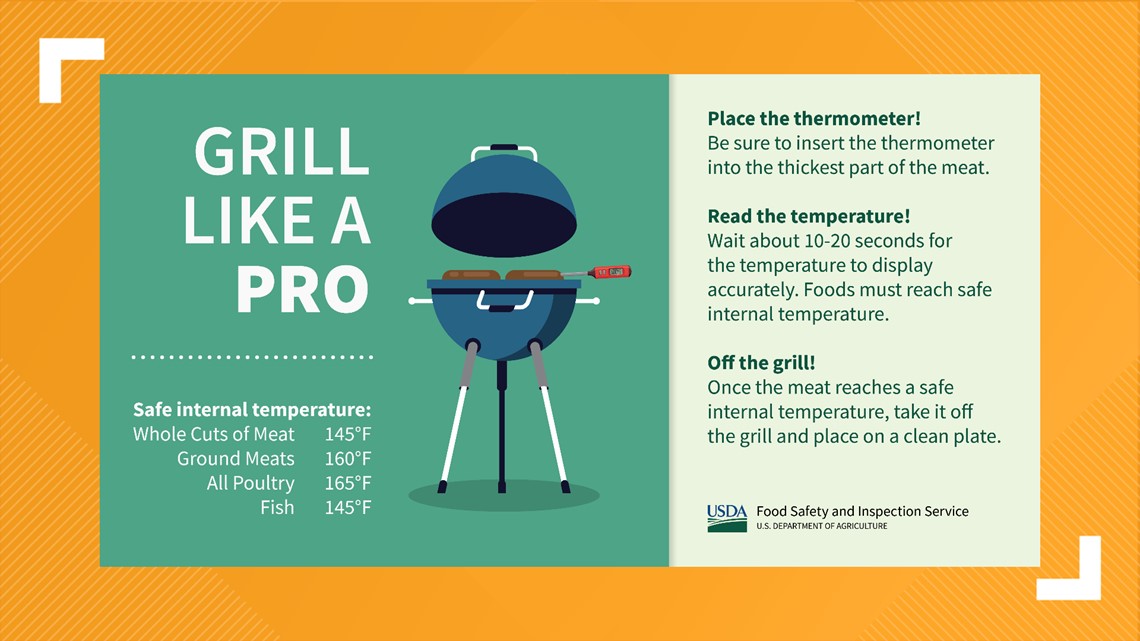TYLER, Texas — East Texas get your grills fired up.
Whether you're a grill master or first time cook, food safety should always be a part of your routine to ensure a healthy and happy Fourth of July.
“Recent USDA consumer behavior studies have shown that individuals don’t always properly wash their hands or use a food thermometer,” said USDA Under Secretary for Food Safety Dr. Emilio Esteban.


Ensure your food is safe to eat this Fourth of July by following these safety steps:
Clean
Make sure your grill is clean before each use.
Clean utensils and plates before they touch any food. If you don't have access to a faucet, keep bottled water, soap and paper towels handy.
It is important to wash your hands before and after handling raw meat and poultry.
To stop bacteria from spreading from your hands to your meal, make sure to wet hands, lather with soap, scrub for 20 seconds, rinse and dry.
Separate
Avoiding cross contamination is major in the kitchen.
Individuals can separate raw meat and vegetables by using different cutting boards.
Another tip is placing raw meat or poultry on one plate and cooking meat and poultry on another.
Refrain from reusing the same utensils when placing raw meat and poultry onto the grill.
Cook
Using food thermometers is an excellent way of ensuring your grilled food is ready to eat.
Simply insert the thermometer through the side of the patty until the probe reaches the center. Remember: color is never a reliable indicator of doneness.
It is always advised to cook food to a minimum internal temperature by using a food thermometer:
- Cook whole cuts of meat to 145 F° with a three-minute rest time
- Cook fish to 145 F°
- Cook ground meats to 160 F°
- Cook poultry (ground or whole) to 165 F°
Even though frozen products may appear to be pre-cooked or browned, treat them as raw food and cook thoroughly.
Products labeled as “Cook and Serve,” “Ready to Cook” and “Oven Ready” must be cooked as well.
Chill
Bacteria can multiply rapidly between 40 F° and 140 F° commonly known as the "danger zone".
Please note that perishable foods should be consumed or refrigerated within the first two hours or one hour if outdoor temperatures are 90 F° and above.
For more food safety information, call the USDA Meat and Poultry Hotline at 1-888-MPHotline (1-888-674-6854), email MPHotline@usda.gov or chat live at ask.usda.gov from 10 a.m. to 6 p.m. Eastern Time, Monday through Friday.

